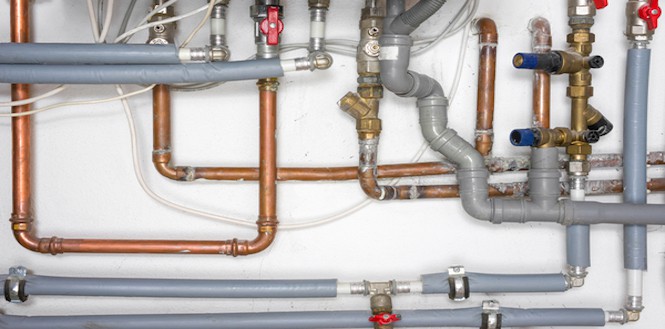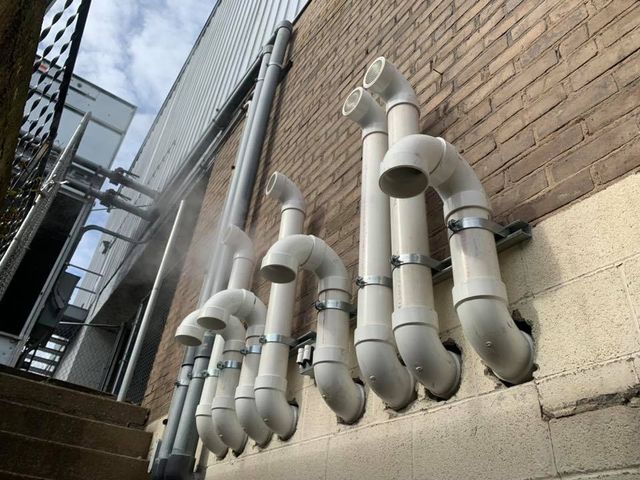Breaking Down Your House's Plumbing System Anatomy
Breaking Down Your House's Plumbing System Anatomy
Blog Article
Have you been hunting for help about Understanding Your Home's Plumbing Anatomy?

Recognizing just how your home's pipes system functions is important for each property owner. From providing clean water for drinking, food preparation, and showering to securely getting rid of wastewater, a well-maintained pipes system is crucial for your family's health and comfort. In this comprehensive overview, we'll discover the detailed network that composes your home's pipes and deal suggestions on maintenance, upgrades, and dealing with usual problems.
Intro
Your home's plumbing system is greater than simply a network of pipes; it's an intricate system that ensures you have access to clean water and efficient wastewater elimination. Knowing its elements and just how they work together can aid you prevent costly repair work and make sure every little thing runs efficiently.
Standard Elements of a Pipes System
Pipelines and Tubing
At the heart of your pipes system are the pipelines and tubes that bring water throughout your home. These can be constructed from various materials such as copper, PVC, or PEX, each with its advantages in regards to durability and cost-effectiveness.
Components: Sinks, Toilets, Showers, etc.
Components like sinks, toilets, showers, and bath tubs are where water is made use of in your house. Comprehending exactly how these fixtures connect to the plumbing system assists in identifying issues and preparing upgrades.
Valves and Shut-off Points
Valves manage the circulation of water in your pipes system. Shut-off valves are important throughout emergency situations or when you need to make repair work, enabling you to separate parts of the system without interfering with water flow to the entire home.
Water System
Key Water Line
The main water line connects your home to the community supply of water or a personal well. It's where water enters your home and is distributed to numerous components.
Water Meter and Stress Regulatory Authority
The water meter measures your water usage, while a pressure regulator guarantees that water streams at a risk-free stress throughout your home's pipes system, protecting against damages to pipelines and components.
Cold Water vs. Hot Water Lines
Recognizing the difference in between cold water lines, which provide water straight from the major, and warm water lines, which lug warmed water from the hot water heater, aids in repairing and preparing for upgrades.
Water drainage System
Drain Pipes Piping and Traps
Drain pipelines lug wastewater away from sinks, showers, and toilets to the sewage system or sewage-disposal tank. Traps stop sewer gases from entering your home and also trap particles that might create clogs.
Air flow Pipes
Air flow pipes enable air into the drainage system, protecting against suction that might reduce drain and create traps to vacant. Proper air flow is important for keeping the integrity of your pipes system.
Importance of Appropriate Water Drainage
Guaranteeing correct drainage prevents backups and water damage. Regularly cleansing drains and preserving catches can avoid pricey repairs and extend the life of your plumbing system.
Water Furnace
Types of Water Heaters
Hot water heater can be tankless or conventional tank-style. Tankless heating units warmth water as needed, while tanks keep warmed water for prompt use.
Upgrading Your Pipes System
Factors for Upgrading
Updating to water-efficient fixtures or replacing old pipes can boost water top quality, reduce water expenses, and raise the worth of your home.
Modern Plumbing Technologies and Their Benefits
Check out modern technologies like clever leak detectors, water-saving toilets, and energy-efficient water heaters that can conserve cash and lower environmental impact.
Expense Factors To Consider and ROI
Compute the ahead of time costs versus long-lasting cost savings when taking into consideration pipes upgrades. Several upgrades pay for themselves with minimized energy bills and fewer fixings.
How Water Heaters Link to the Pipes System
Recognizing how water heaters link to both the cold water supply and hot water distribution lines assists in detecting concerns like insufficient hot water or leakages.
Upkeep Tips for Water Heaters
Regularly flushing your water heater to eliminate debris, examining the temperature settings, and examining for leakages can expand its lifespan and improve energy effectiveness.
Usual Pipes Concerns
Leakages and Their Causes
Leaks can occur because of aging pipelines, loosened installations, or high water stress. Resolving leakages promptly protects against water damage and mold growth.
Blockages and Obstructions
Blockages in drains pipes and commodes are usually caused by purging non-flushable things or a build-up of oil and hair. Utilizing drainpipe displays and being mindful of what goes down your drains pipes can stop obstructions.
Indicators of Pipes Problems to Expect
Low water stress, slow drains, foul odors, or uncommonly high water bills are indications of prospective plumbing issues that must be resolved promptly.
Plumbing Maintenance Tips
Routine Assessments and Checks
Arrange yearly pipes examinations to capture problems early. Seek signs of leaks, corrosion, or mineral accumulation in faucets and showerheads.
Do It Yourself Upkeep Tasks
Simple tasks like cleaning tap aerators, looking for commode leaks using dye tablet computers, or shielding revealed pipes in cold climates can avoid significant plumbing problems.
When to Call an Expert Plumbing Professional
Know when a plumbing issue requires expert experience. Trying complex repairs without proper understanding can bring about even more damage and higher repair costs.
Tips for Minimizing Water Usage
Simple habits like taking care of leakages immediately, taking much shorter showers, and running complete tons of washing and meals can save water and lower your utility bills.
Eco-Friendly Pipes Options
Take into consideration lasting pipes materials like bamboo for flooring, which is durable and environmentally friendly, or recycled glass for counter tops.
Emergency Preparedness
Steps to Take During a Pipes Emergency situation
Know where your shut-off shutoffs lie and exactly how to shut off the supply of water in case of a ruptured pipeline or significant leakage.
Significance of Having Emergency Contacts Handy
Maintain get in touch with information for local plumbers or emergency situation services readily available for quick reaction during a pipes dilemma.
Environmental Impact and Preservation
Water-Saving Components and Appliances
Mounting low-flow taps, showerheads, and commodes can substantially reduce water use without sacrificing efficiency.
DIY Emergency Situation Fixes (When Applicable).
Short-term fixes like utilizing air duct tape to patch a dripping pipe or positioning a bucket under a trickling faucet can reduce damage till a professional plumbing professional shows up.
Final thought.
Recognizing the anatomy of your home's plumbing system encourages you to preserve it efficiently, conserving money and time on repairs. By following routine upkeep regimens and staying educated about contemporary plumbing technologies, you can guarantee your plumbing system operates effectively for several years to come.
Exploring Your Homes Plumbing Anatomy
Water Supply System
Main Water Line: This is where water enters your home from the municipal supply or a private well. Water Meter: Typically located near where the main water line enters the property, it measures the amount of water used. Shutoff Valve: It s crucial to know where this is in case of emergencies. It allows you to turn off the water supply to the entire house. Pipes and Fittings: These distribute water throughout your home. Materials can include copper, PVC, or PEX. Drain-Waste-Vent (DWV) System
Drains: Located in sinks, showers, and tubs, these carry wastewater away. Traps: U-shaped pipes under sinks that hold standing water, blocking sewer gases from entering the home. Vents: Pipes that lead from the DWV system to the outside, preventing vacuum formation and allowing gases to escape. Sewer Line: Carries all wastewater from the home to the municipal sewer system or a septic tank. Fixtures and Appliances
Sinks, Toilets, and Showers Dishwashers and Washing Machines Water Heaters Maintenance Tips
Regularly check for leaks in exposed pipes and around fixtures. Inspect the water heater annually for signs of wear. Clean drains and traps to prevent clogs and odors. Know how to shut off water to individual fixtures. When to Call a Professional
Major leaks or burst pipes Installation of new pipes or fixtures Septic tank issues Remodeling projects that involve plumbing changes Conclusion
Understanding the anatomy of your home's plumbing is key to maintaining a functional and efficient system. Regular checks and knowing when to call in the experts can save you time, money, and stress.
https://www.mavyn.com/blog/exploring-your-homes-plumbing-anatomy

As a passionate reader on Understanding Your Home's Plumbing Anatomy, I think sharing that piece was really helpful. For those who liked our page plz don't forget to pass it around. I cherish reading our article about Anatomy of a House: Understanding the Components.
Check This Out Report this page